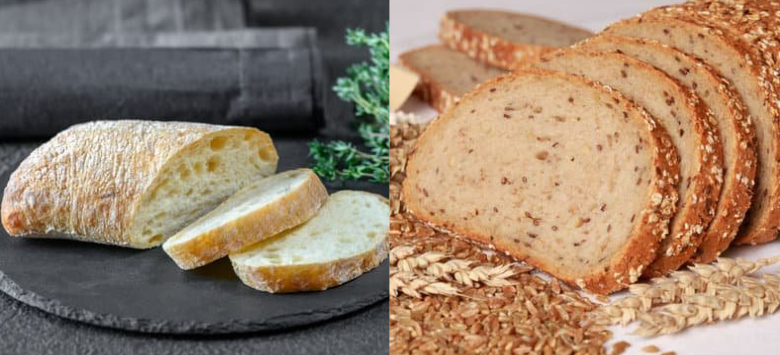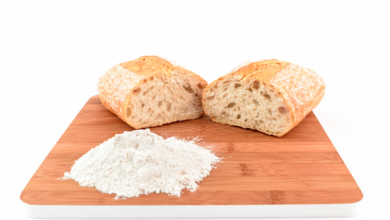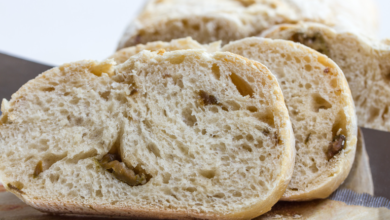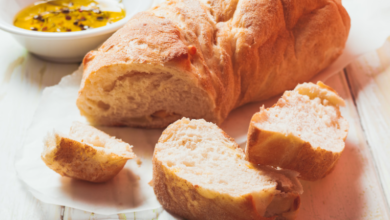A Look at Ciabatta Vs. Wheat Bread: The Pros and Cons

What To Know
- Whether you’re a seasoned baker or simply a bread enthusiast, understanding the nuances between these two bread varieties is essential for making informed decisions.
- If you seek a more robust, flavorful bread with higher nutritional value, wheat bread is a better choice.
- Whether you crave a light and airy bread or a hearty and flavorful loaf, both ciabatta and wheat bread have a place in the kitchens of bread enthusiasts.
In the realm of bread, ciabatta and wheat bread stand as two popular choices, each offering a distinct culinary experience. Whether you’re a seasoned baker or simply a bread enthusiast, understanding the nuances between these two bread varieties is essential for making informed decisions. This comprehensive guide will delve into the taste, texture, nutritional value, and uses of ciabatta and wheat bread, empowering you to choose the perfect bread for your needs.
Taste and Texture
Ciabatta: Ciabatta is renowned for its airy, open texture with large, irregular holes. This unique crumb structure results from a high hydration dough and a long fermentation process. The flavor profile of ciabatta is mild and slightly tangy, with a subtle sweetness from the olive oil often used in its preparation.
Wheat Bread: Wheat bread typically has a denser, more uniform texture than ciabatta. The crumb is finer, with smaller, evenly distributed holes. The flavor of wheat bread is generally more robust and nutty, with a pronounced wheat flavor.
Nutritional Value
Both ciabatta and wheat bread provide essential nutrients, but there are some key differences to consider.
Ciabatta: Ciabatta is typically made with white flour, which means it has a lower fiber content than wheat bread. It is also lower in protein and certain vitamins and minerals.
Wheat Bread: Wheat bread, made with whole wheat flour, is a richer source of fiber, protein, and micronutrients. It contains higher levels of vitamins B, iron, and zinc.
Uses
The distinct characteristics of ciabatta and wheat bread make them suitable for different culinary applications.
Ciabatta: Ciabatta’s airy texture and mild flavor make it an ideal bread for sandwiches and bruschetta. It can also be used for making croutons or as a base for pizza.
Wheat Bread: Wheat bread’s dense texture and nutty flavor make it a good choice for toasting, grilling, or making sandwiches with hearty fillings. It is also a popular bread for breakfast or as a side dish.
Which Bread is Right for You?
The choice between ciabatta and wheat bread ultimately depends on your taste preferences and dietary needs.
- If you prefer a light, airy bread with a mild flavor, ciabatta is an excellent option.
- If you seek a more robust, flavorful bread with higher nutritional value, wheat bread is a better choice.
Additional Considerations
Gluten Content: Both ciabatta and wheat bread contain gluten, a protein found in wheat and other grains. Individuals with gluten intolerance or celiac disease should avoid these breads.
Sodium Content: Ciabatta and wheat bread can vary in sodium content depending on the specific ingredients used. If you are concerned about sodium intake, check the nutrition label before consuming.
Storage: To maintain freshness, store ciabatta and wheat bread in a cool, dry place. They can be kept at room temperature for a few days or frozen for longer storage.
The Verdict: Ciabatta vs Wheat Bread
Ciabatta and wheat bread offer unique culinary experiences, each with its own advantages and drawbacks. Ultimately, the best bread for you depends on your individual preferences and dietary needs. Whether you crave a light and airy bread or a hearty and flavorful loaf, both ciabatta and wheat bread have a place in the kitchens of bread enthusiasts.
Frequently Asked Questions
Q: Which bread is healthier, ciabatta or wheat bread?
A: Wheat bread is generally considered healthier due to its higher fiber, protein, and micronutrient content.
Q: Can I substitute ciabatta for wheat bread in recipes?
A: Yes, but the texture and flavor of the dish may be slightly different.
Q: How can I tell if ciabatta or wheat bread is fresh?
A: Fresh bread should have a slightly crispy crust and a soft, springy interior. Avoid bread that is hard or stale.



